Like a Rolling Stone: Bob Dylan
Like a Rolling Stone: Bob Dylan is a 1965 song by the American singer-songwriter Bob Dylan
 Its confrontational lyrics originated in an extended piece of verse Dylan wrote in June 1965, when he returned exhausted from a grueling tour of England. Dylan distilled this draft into four verses and a chorus. “Like a Rolling Stone” was recorded a few weeks later as part of the sessions for the forthcoming album Highway 61 Revisited.
Its confrontational lyrics originated in an extended piece of verse Dylan wrote in June 1965, when he returned exhausted from a grueling tour of England. Dylan distilled this draft into four verses and a chorus. “Like a Rolling Stone” was recorded a few weeks later as part of the sessions for the forthcoming album Highway 61 Revisited.
During a difficult two-day preproduction, Dylan struggled to find the essence of the song, which was demoed without success in 3/4 time. A breakthrough was made when it was tried in a rock music format, and rookie session musician Al Kooper improvised the organ riff for which the track is known. However, Columbia Records was unhappy with both the song’s length at over six minutes and its heavy electric sound, and was hesitant to release it.
It was only when a month later a copy was leaked to a new popular music club and heard by influential DJs that the song was put out as a single. Although radio stations were reluctant to play such a long track, “Like a Rolling Stone” reached number two in the US Billboard charts (number one in Cashbox) and became a worldwide hit.
(I Can’t Get No) Satisfaction: Rolling Stones
(I Can’t Get No) Satisfaction: Rolling Stones is a song by the English rock band the Rolling Stones, released in 1965.

It was written by Mick Jagger and Keith Richards and produced by Andrew Loog Oldham. Richards’ three-note guitar riff—intended to be replaced by horns—opens and drives the song. The lyrics refer to sexual frustration and commercialism.
The song was first released as a single in the United States in June 1965 and was also featured on the American version of the Rolling Stones’ fourth studio album, Out of Our Heads, released that July.
“Satisfaction” was a hit, giving the Stones their first number one in the US. In the UK, the song initially was played only on pirate radio stations, because its lyrics were considered too sexually suggestive.[3] It later became the Rolling Stones’ fourth number one in the United Kingdom.
Johnny B. Goode: Chuck Berry
 A 1958 rock-and-roll song written and first recorded by Chuck Berry. The song was a major hit among both black and white audiences, peaking at number 2 on Billboard magazine’s Hot R&B Sides chart and number 8 on its Hot 100 chart.
A 1958 rock-and-roll song written and first recorded by Chuck Berry. The song was a major hit among both black and white audiences, peaking at number 2 on Billboard magazine’s Hot R&B Sides chart and number 8 on its Hot 100 chart.
The song is one of Berry’s most famous. It has been covered by many artists and has received several honors and accolades. It is also considered one of the most recognizable songs in music history. The song is ranked as number seven on Rolling Stone’s list of the “500 Greatest Songs of All Time”.
Written by Berry in 1955, the song is about a “country boy” who plays a guitar “just like ringing a bell,” and who might one day have his “name in lights.”
Berry has acknowledged that the song is partly autobiographical and that the original lyrics referred to Johnny as a “colored boy”, but he changed it to “country boy” to ensure radio play. As well as suggesting that the guitar player is good, the title hints at autobiographic elements, because Berry was born at 2520 Goode Avenue, in St. Louis.
The song was initially inspired by Johnnie Johnson, the regular piano player in Berry’s band, but developed into a song mainly about Berry himself. Johnson played on many other recordings by Berry, but Lafayette Leake played the piano on this song.
The opening guitar riff of “Johnny B. Goode” is essentially a note-for-note copy of the opening single-note solo on Louis Jordan’s “Ain’t That Just Like a Woman” (1946), played by guitarist Carl Hogan. Neither the guitar intro nor the solo are played at once. Berry played the introductory parts together with the rhythm guitar and later overdubbed the solo runs.
Berry has written three more songs involving the character Johnny B. Goode, “Bye Bye Johnny”, “Go Go Go”, and “Johnny B. Blues”; and titled an album, and the nearly 19 min instrumental title track from it, as “Concerto in B. Goode”.
Good Vibrations: Beach Boys
Good Vibrations: Beach Boys is a song composed and produced by Brian Wilson with words by Mike Love for the American rock band the Beach Boys. Released as a single in October 1966, it was an immediate critical and commercial hit, topping record charts in several countries including the US and UK. Characterized by its complex soundscapes, episodic structure, and subversions of pop music formula, it was the most costly single ever recorded at the time of its release. “Good Vibrations” later became widely acclaimed as one of the greatest masterpieces of rock music
 Highly influential in the popularization of hard rock and psychedelic rock, the Experience was best known for the skill, style, and charisma of their frontman, Jimi Hendrix.
Highly influential in the popularization of hard rock and psychedelic rock, the Experience was best known for the skill, style, and charisma of their frontman, Jimi Hendrix.
Initiated during the sessions for the album Pet Sounds (1966), it was not taken from or issued as a lead single for an album, but rather as a stand-alone single, with the Pet Sounds instrumental “Let’s Go Away for Awhile” as a B-side. It was envisioned for the unfinished album Smile, but instead appeared on the substitute LP Smiley Smile (1967).
Most of the song was developed as it was recorded. Its title derived from Wilson’s fascination with cosmic vibrations, after his mother once told him as a child that dogs sometimes bark at people in response to their “bad vibrations”. He used the concept to suggest extrasensory perception, while Love’s lyrics were inspired by the Flower Power movement that was then burgeoning in Southern California.
The making of “Good Vibrations” was unprecedented for any kind of recording, with a total production cost estimated between $50,000 and $75,000 (equivalent to $370,000 and $550,000 in 2015). Building upon the multi-layered approach he had formulated with Pet Sounds, Wilson recorded the song in different sections at four Hollywood studios from February to September 1966, resulting in a cut-up mosaic of several musical episodes marked by disjunctive key and modal shifts. Band publicist Derek Taylor dubbed the unusual work a “pocket symphony”. It contained previously untried mixes of instruments, including jaw harp and Electro-Theremin, and was the first pop hit to have a cello playing juddering rhythms.
Virtually every pop music critic recognizes “Good Vibrations” as one of the most important compositions and recordings of the entire rock era, and it is regularly hailed as one of the finest pop productions of all time. For the song, Wilson is credited with further developing the use of the recording studio as an instrument.
The single revolutionized rock music from live concert performances to studio productions which could only exist on record, heralding a wave of pop experimentation and the onset of psychedelic and progressive rock. It is also frequently cited for its use of theremin, which led to the instrument’s revival and to an increased interest in analog synthesizers. Its success earned the Beach Boys a Grammy nomination for Best Vocal Group performance in 1966; the song was eventually inducted into the Grammy Hall of Fame in 1994. “Good Vibrations” was voted number one in the Mojo’s “Top 100 Records of All Time” number six on Rolling Stone’s “500 Greatest Songs of All Time”, and was included in the Rock and Roll Hall of Fame’s “500 Songs that Shaped Rock and Roll”
I Want to Hold Your Hand: The Beatles
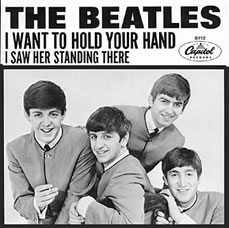
I Want to Hold Your Hand: The Beatles is a song by the English rock band the Beatles. Written by John Lennon and Paul McCartney, and recorded in October 1963, it was the first Beatles record to be made using four-track equipment.
With advance orders exceeding one million copies in the United Kingdom, “I Want to Hold Your Hand” would have gone straight to the top of the British record charts on its day of release (29 November 1963) had it not been blocked by the group’s first million seller “She Loves You”, their previous UK single, which was having a resurgence of popularity following intense media coverage of the group. Taking two weeks to dislodge its predecessor, “I Want to Hold Your Hand” stayed at number one for five weeks and remained in the UK top fifty for twenty-one weeks in total.
It was also the group’s first American number one, entering the Billboard Hot 100 chart on 18 January 1964 at number forty-five and starting the British invasion of the American music industry. By 1 February it held the number-one spot, and stayed there for seven weeks before being replaced by “She Loves You”, a reverse scenario of what had occurred in Britain. It remained on the US charts for a total of fifteen weeks.
“I Want to Hold Your Hand” became the Beatles’ best-selling single worldwide. In 2013, Billboard magazine named it the 44th biggest hit of “all-time” on the Billboard Hot 100 charts
Hound Dog: Elvis Presley

Hound Dog: Elvis Presley is a twelve-bar blues song written by Jerry Leiber and Mike Stoller. Recorded originally by Willie Mae “Big Mama” Thornton on August 13, 1952, in Los Angeles and released by Peacock Records in late February 1953, “Hound Dog” was Thornton’s only hit record, selling over 500,000 copies, spending 14 weeks in the R&B charts, including seven weeks at #1. Thornton’s recording of “Hound Dog” is listed as one of the Rock and Roll Hall of Fame’s “500 Songs That Shaped Rock and Roll”, and was inducted into the Grammy Hall of Fame in February 2013.
“Hound Dog” has been recorded more than 250 times. The best-known version of “Hound Dog” is the July 1956 recording by Elvis Presley, which is ranked No. 19 on Rolling Stone magazine’s list of the 500 Greatest Songs of All Time; it is also one of the best-selling singles of all time. Presley’s version, which sold about 10 million copies globally, was his best-selling song and “an emblem of the rock ‘n’ roll revolution”.
It was simultaneously No. 1 on the US pop, country, and R&B charts in 1956, and it topped the pop chart for 11 weeks — a record that stood for 36 years. Presley’s 1956 RCA recording was inducted into the Grammy Hall of Fame in 1988, and it is listed as one of the Rock and Roll Hall of Fame’s “500 Songs That Shaped Rock and Roll”.
Peggy Sue: Buddy Holly and the Crickets

What I’d Say: Ray Charles

Ray Charles is an American rhythm and blues song by Ray Charles, released in 1959. As single divided into two parts, it was one of the first soul songs. The composition was improvised one evening late in 1958 when Charles, his orchestra, and backup singers had played their entire set list at a show and still had time left; the response from many audiences was so enthusiastic that Charles announced to his producer that he was going to record it.
After his run of R&B hits, this song finally broke Charles into mainstream pop music and itself sparked a new subgenre of R&B titled soul, finally putting together all the elements that Charles had been creating since he recorded “I Got a Woman” in 1954. The gospel and rhumba influences combined with the sexual innuendo in the song made it not only widely popular but very controversial to both white and black audiences. It earned Ray Charles his first gold record and has been one of the most influential songs in R&B and rock and roll history. For the rest of his career, Charles closed every concert with the song. It was added to the National Recording Registry in 2002 and ranked at number 10 in Rolling Stone’s “The 500 Greatest Songs of All Time”.
Pride and Joy: Stevie Ray Vaughan
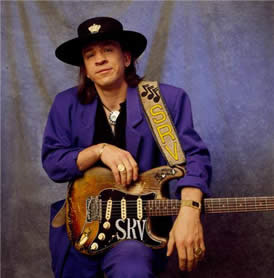
Pride and Joy: Stevie Ray Vaughan is a song by Texas singer/guitarist Stevie Ray Vaughan and his backup band Double Trouble. It is an original composition by Vaughan and appeared on his 1983 Epic Records debut album Texas Flood. “Pride and Joy” was also released as Vaughan’s first single and has become one of his best-known songs.
Called “a classic Texas shuffle”, it has a twelve-bar blues arrangement, notated in the key of E (although with Vaughan’s guitar tuned one-half step lower, resulting in the pitch of E♭) in 4
4 time with a moderately fast tempo. The main guitar figure features a bassline along with muted chord chops to produce a percussive-like effect. Vaughan also “extracts extra sound from the guitar by choosing finger shapes that allow the maximum number of strings to ring at a time (often the top E-string.
Born to Run: Bruce Springsteen
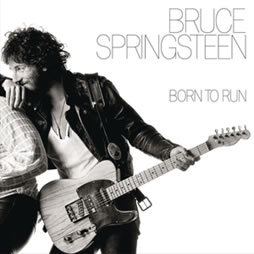
Born to Run: Bruce Springsteen is a song by American singer songwriter Bruce Springsteen, and the title song of his album Born to Run. Upon its release, music critic Robert Christgau took note of its wall of sound influence and called it “the fulfillment of everything ‘Be My Baby’ was about and lots more.”
The song ranked number 21 on the Rolling Stone list of the 500 Greatest Songs of All Time and is included in The Rock and Roll Hall of Fame’s 500 Songs that Shaped Rock and Roll.
Written at 7½ West End Court in Long Branch, New Jersey in early 1974, the song was Bruce Springsteen’s final attempt to become successful. The prior year, Springsteen had released two albums to critical acclaim but with little commercial movement.
Written in the first person, the song is a love letter to a girl named Wendy, for whom the hot-rod-riding protagonist seems to possess the passion to love, just not the patience. However, Springsteen has noted that it has a much simpler core: getting out of Freehold. U.S. Route 9 is mentioned from the lyric “sprung from cages out on Highway 9”.
In his 1996 book Songs, Springsteen relates that while the beginning of the song was written on guitar around the opening riff, the song’s writing was finished on piano, the instrument that most of the Born to Run album was composed on. The song was recorded in the key of E major.
In the period prior to the release of Born to Run Springsteen was becoming well-known (especially in his native northeast) for his epic live shows. “Born to Run” joined his concert repertoire well before the release of the album, being performed in concert by May 1974, if not earlier.
The first recording of the song was made by Allan Clarke of the British group The Hollies, although its release was delayed, only appearing after Springsteen’s own now-famous version
Be My Baby: The Ronnettes

Be My Baby: The Ronnettes is a song written by Jeff Barry, Ellie Greenwich and Phil Spector. It was first recorded and released by American girl group The Ronettes as a single in August 1963 and later placed on their 1964 debut LP Presenting the Fabulous Ronettes featuring Veronica. Spector produced their elaborately layered recording in what is now largely considered the ultimate embodiment of his Wall of Sound production formula.
Runaround Sue: Dion
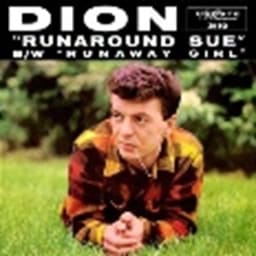
Runaround Sue: Dion is a pop song, in a doo-wop style, originally a US No. 1 hit for the singer Dion during 1961 after he split with the Belmonts. The song ranked No. 342 on the Rolling Stone list of “The 500 Greatest Songs of All Time”. The song was written by Dion with Ernie Maresca, and tells the story of a disloyal lover.
Imagine: John Lennon
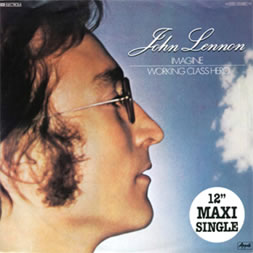
Imagine: John Lennon is a song written and performed by the English musician John Lennon. The best-selling single of his solo career, its lyrics encourage the listener to imagine a world at peace without the barriers of borders or the divisions of religion and nationality, and to consider the possibility that the focus of humanity should be living a life unattached to material possessions.
Lennon and Yoko Ono co-produced the song and album of the same name with Phil Spector.
Recording began at Lennon’s home studio at Tittenhurst Park, England, in May 1971, with final overdubs taking place at the Record Plant, in New York City, during July. One month after the September release of the LP, Lennon released “Imagine” as a single in the United States; the song peaked at number three on the Billboard Hot 100 and the LP reached number one on the UK chart in November, later becoming the most commercially successful and critically acclaimed album of Lennon’s solo career.
Although not originally released as a single in the United Kingdom, it was released in 1975 to promote a compilation LP and it reached number six in the chart that year. The song has since sold more than 1.6 million copies in the UK; it reached number one following Lennon’s murder in December 1980. In 1985, Central Park memorialized a portion of the park with a mosaic that reads “Imagine” in honor of Lennon.
Maybe I’m Amazed: Paul McCartney

Maybe I’m Amazed: Paul McCartney a song written by Paul McCartney that was first released on his 1970 album McCartney. McCartney dedicated the song to his wife, Linda, who had helped him get through the break-up of the Beatles.
Although the original recording has never been released as a single, a live performance by McCartney’s later band Wings, from the live album Wings over America, was. This version became a top-ten hit in the United States and reached number 28 in the United Kingdom.
McCartney wrote the song in 1969, just before the Beatles’ break-up. He credited his wife Linda with helping him get through the difficult time. Although most of his debut solo album was recorded at his home in London, McCartney recorded “Maybe I’m Amazed” entirely in EMI’s Number Two studio in Abbey Road, on the same day as he recorded “Every Night”.
He played all the instruments: guitars, bass, piano, organ and drums. Although McCartney declined to release the song as a single in 1970, it nonetheless received a great deal of radio airplay worldwide, making it one of his most recognisable solo successes.[citation needed] A promotional film was made, comprising still photographs of McCartney, his wife Linda and stepdaughter Heather, which first aired in the UK on 19 April 1970 on ITV in its own slot, and as a part of an episode of CBS Television’s The Ed Sullivan Show.
The original studio version of the song finished with a fade instead of a full ending, but McCartney later composed an ending that can be heard on the live versions of the song. McCartney first performed this live with Wings, in Châteauvallon, France, on 9 July 1972.
During his guest appearance in The Simpsons episode “Lisa the Vegetarian”, McCartney says to Lisa and Apu “If you play ‘Maybe I’m Amazed’ backwards, you’ll find a recipe for a ripping lentil soup”, which can be heard in the background when the song is played during the closing credits to the episode.
Regarded as one of McCartney’s finest love songs, it achieved the number 347 position in the “500 Greatest Songs of All Time” list compiled by Rolling Stone magazine in November 2004, and is the only solo McCartney song to make the list.
In a late 2009 Q&A with journalists held in London to promote his live album Good Evening New York City, McCartney said “Maybe I’m Amazed” was “the song he would like to be remembered for in the future”.
My Sweet Lord: George Harrison

My Sweet Lord: George Harrison is a song by English musician and former Beatle George Harrison that was released in November 1970 on his triple album All Things Must Pass. Also issued as a single, Harrison’s first as a solo artist, “My Sweet Lord” topped charts worldwide and was the biggest-selling single of 1971 in the UK. In America and Britain, the song was the first number one single by an ex-Beatle. Harrison originally gave the song to his fellow Apple Records artist Billy Preston to record; this version, which Harrison co-produced, appeared on Preston’s Encouraging Words album in September 1970.
Harrison wrote “My Sweet Lord” in praise of the Hindu god Krishna, while at the same time intending the lyrics to serve as a call to abandon religious sectarianism through his deliberate blending of the Hebrew word hallelujah with chants of “Hare Krishna” and Vedic prayer.
The recording features producer Phil Spector’s Wall of Sound treatment and heralded the arrival of Harrison’s much-admired slide guitar technique, which one biographer described as being “musically as distinctive a signature as the mark of Zorro”. Preston, Ringo Starr, Eric Clapton, and the group Badfinger are among the other musicians appearing on the recording.
Later in the 1970s, “My Sweet Lord” was at the centre of a heavily publicised copyright infringement suit, due to its similarity to the Ronnie Mack song “He’s So Fine”, a 1963 hit for the New York girl group the Chiffons.
In 1976, Harrison was found to have subconsciously plagiarised the earlier tune, a verdict that had repercussions throughout the music industry. He claimed to have used the out-of-copyright “Oh Happy Day”, a Christian hymn, as his inspiration for the song’s melody.
Harrison performed “My Sweet Lord” at the Concert for Bangladesh in August 1971, and it remains the most popular composition from his post-Beatles career. He reworked the song as “My Sweet Lord (2000)” for inclusion as a bonus track on the 30th anniversary reissue of All Things Must Pass. Many artists have covered the song including Andy Williams, Peggy Lee, Edwin Starr, Johnny Mathis, Nina Simone, Julio Iglesias, Richie Havens, Megadeth, Boy George, Elton John, Jim James, Bonnie Bramlett and Elliott Smith. “My Sweet Lord” is ranked 460th on Rolling Stone magazine’s list of “the 500 Greatest Songs of All Time”.
The song reached number 1 in Britain for a second time when re-released in January 2002, two months after Harrison’s death.
You’ve Lost That Lovin’ Feelin’: The Righteous Brothers
 You’ve Lost That Lovin’ Feelin’: The Righteous Brothers is a song written by Phil Spector, Barry Mann, and Cynthia Weil. It was first recorded by the Righteous Brothers in 1964, and was produced by Phil Spector.
You’ve Lost That Lovin’ Feelin’: The Righteous Brothers is a song written by Phil Spector, Barry Mann, and Cynthia Weil. It was first recorded by the Righteous Brothers in 1964, and was produced by Phil Spector.
Their recording is considered by some music critics to be the ultimate expression and illustration of Spector’s “Wall of Sound” recording technique.
It has also been described by various music writers as “one of the best records ever made” and “the ultimate pop record”. The original Righteous Brothers version was a critical and commercial success on its release, becoming a number-one hit single in both the United States and the United Kingdom in February 1965. It was the fifth best selling song of 1965 in the US. It also entered the Top 10 in the UK chart on an unprecedented three separate occasions
The Weight: The Band
 The Weight: The Band is a song originally by the Canadian-American group The Band that was released as Capitol Records single 2269 in 1968 and on the group’s debut album Music from Big Pink. Written by Band member Robbie Robertson, the song is about a visitor’s experiences in a town mentioned in the lyric’s first line as Nazareth. “The Weight” has significantly influenced American popular music, having been listed as #41 on Rolling Stone’s 500 Greatest Songs of All Time published in 2004.[1] Pitchfork Media named it the 13th best song of the Sixties, and the Rock and Roll Hall of Fame named it one of the 500 Songs that Shaped Rock and Roll.
The Weight: The Band is a song originally by the Canadian-American group The Band that was released as Capitol Records single 2269 in 1968 and on the group’s debut album Music from Big Pink. Written by Band member Robbie Robertson, the song is about a visitor’s experiences in a town mentioned in the lyric’s first line as Nazareth. “The Weight” has significantly influenced American popular music, having been listed as #41 on Rolling Stone’s 500 Greatest Songs of All Time published in 2004.[1] Pitchfork Media named it the 13th best song of the Sixties, and the Rock and Roll Hall of Fame named it one of the 500 Songs that Shaped Rock and Roll.
PBS, which broadcast performances of the song in “Ramble at the Ryman” (2011), “Austin City Limits” (2012), and “Quick Hits” (2012), describes it as “a masterpiece of Biblical allusions, enigmatic lines and iconic characters” and notes its enduring popularity as “an essential part of the American songbook.”
“The Weight” is one of The Band’s best known songs though it was not a significant mainstream hit for the group in the U.S., peaking at only #63.
The Band’s recording fared much better in Canada and the UK – in those countries, the single was a top 40 hit, peaking at #35 in Canada and #21 in the UK in 1968. However, the song’s popularity was greatly enhanced by three cover releases in 1968 and 1969 with arrangements that appealed to a diversity of music audiences. Aretha Franklin’s 1969 soul music arrangement was included in her This Girl’s in Love with You album, which peaked in the U.S. at #19 and #3 on the soul chart, and peaked in Canada at #12.
Jackie DeShannon’s 1968 pop music arrangement, debuting on the Hot 100 one week before The Band’s, peaked at #55 in the U.S., #35 in Canada. A joint single rhythm and blues arrangement released by Diana Ross & the Supremes and The Temptations in 1969, hit #46 in the U.S., and #36 in Canada. The Band’s and Jackie DeShannon’s versions never mentioned the title. The Band’s version credits Jaime Robbie Robertson, Rick Danko, Richard Manuel, Garth Hudson, Levon Helm on the record label, rather than The Band.
My Generation: The Who
 My Generation: The Who is a song by the English rock band The Who, which became a hit and one of their most recognizable songs. The song was named the 11th greatest song by Rolling Stone Magazine on its list of the 500 Greatest Songs of All Time and 13th on VH1’s list of the 100 Greatest Songs of Rock & Roll.
My Generation: The Who is a song by the English rock band The Who, which became a hit and one of their most recognizable songs. The song was named the 11th greatest song by Rolling Stone Magazine on its list of the 500 Greatest Songs of All Time and 13th on VH1’s list of the 100 Greatest Songs of Rock & Roll.
It’s also part of The Rock and Roll Hall of Fame’s 500 Songs that Shaped Rock and Roll and is inducted into the Grammy Hall of Fame for “historical, artistic and significant” value. In 2009 it was named the 37th Greatest Hard Rock Song by VH1.
The song has been said to have “encapsulated the angst of being a teenager,” and has been characterized as a “nod to the mod counterculture”.
The song was released as a single on 29 October 1965, reaching No. 2 in the UK, The Who’s highest charting single in their home country and No. 74 in America. “My Generation” also appeared on The Who’s 1965 debut album, My Generation (The Who Sings My Generation in the United States), and in greatly extended form on their live album Live at Leeds (1970).
The Who re-recorded the song for the Ready Steady Who! EP in 1966, but it was not included on the EP, and this version was released only in 1995 on the remastered version of the A Quick One album. The main difference between this version and the original is that instead of the hail of feedback which ends the original, the band play a chaotic rendition of Edward Elgar’s “Land of Hope and Glory.” In the album’s liner notes the song is credited to both Townshend and Elgar.
Townshend reportedly wrote the song on a train and is said to have been inspired by the Queen Mother who is alleged to have had Townshend’s 1935 Packard hearse towed off a street in Belgravia because she was offended by the sight of it during her daily drive through the neighbourhood.[9] Townshend has also credited Mose Allison’s “Young Man Blues” as the inspiration for the song, saying “Without Mose I wouldn’t have written ‘My Generation’.” Townshend told Rolling Stone magazine in 1985 that “‘My Generation’ was very much about trying to find a place in society.
California Dreamin’: The Mamas and The Papas
 California Dreamin’: The Mamas and The Papas is a song written by John Phillips and Michelle Phillips and was first recorded by Barry McGuire. However, the best known version is by The Mamas & the Papas, who sang backup on the original version and released as a single in 1965. The song is #89 in Rolling Stone’s list of the 500 Greatest Songs of All Time.
California Dreamin’: The Mamas and The Papas is a song written by John Phillips and Michelle Phillips and was first recorded by Barry McGuire. However, the best known version is by The Mamas & the Papas, who sang backup on the original version and released as a single in 1965. The song is #89 in Rolling Stone’s list of the 500 Greatest Songs of All Time.
The lyrics of the song express the narrator’s longing for the warmth of Los Angeles during a cold winter in New York City.
The song became a signpost of the California Myth and the arrival of the nascent counterculture era.
“California Dreamin’ ” was certified as a Gold Record (single) by the RIAA in June 1966 and was inducted into the Grammy Hall of Fame in 2001.
The song was written in 1963 while John Phillips and Michelle Phillips were living in New York. He dreamed about the song and woke her up to help him write it. Michelle Phillips enjoyed visiting churches, and she and John Phillips visited St. Patrick’s Cathedral, which inspired the second verse of “California Dreamin’” (“Stopped into a church…”).
John hated the verse, as he was turned off to churches by unpleasant memories of parochial school, but he couldn’t think of anything better so he left it in. At the time, John and Michelle Phillips were members of the folk group “The New Journeymen”, which evolved into The Mamas & the Papas.
They earned their first record contract after being introduced to Lou Adler, the head of Dunhill Records, by Barry McGuire. In thanks to Adler, they sang the backing vocals to “California Dreamin'” with members of the session band The Wrecking Crew on McGuire’s album This Precious Time. The Mamas & the Papas then recorded their own version using the same instrumental and backing vocal tracks to which they added new vocals and an alto flute solo by Bud Shank. P. F. Sloan did the guitar introduction. McGuire’s original vocal can be briefly heard on the left channel at the beginning of the record, having not been completely wiped.
The single was released in late 1965 but was not an immediate breakthrough. After gaining little attention in Los Angeles upon its release, Michelle Phillips remembers that it took a radio station in Boston to break the song nationwide. After making its chart debut in January 1966, the song peaked at number 4 in March on both the Billboard Hot 100, lasting 17 weeks, and Cashbox, lasting 20 weeks. “California Dreamin'” was the number 1 single of 1966 in Billboard and tied for number 1 with “Ballad of the Green Berets” in Cashbox. “California Dreamin'” also reached number 23 on the UK charts upon its original release and re-charted after its use in a Carling Black Label commercial in 1997, eventually peaking at number 9 there.
